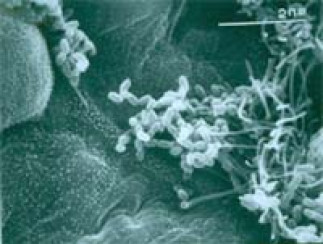Conférence du Dr Ziad El-Hajj, Postdoctoral Fellow, Department of Biology, Concordia University. Cette conférence sera prononcée en anglais
Résumé
Division in rod-shaped bacteria such as Escherichia coli is a cycle that involves accumulation of biomass and elongation of the cell, followed by the activation of the division machinery at midcell and the subsequent septation into two daughter cells. Wild-type E. coli can divide even in medium of quite low osmolality e.g. Luria broth with or without salt.
We have isolated a mutant strain which grows and divides as 0.5-1 micron rods in a medium of high osmolality and elongates to form enormously long cells (as long as 750 microns) in LB without salt. These mutant cells accumulate mass during elongation almost as quickly as normal E. coli would do in the same medium. However they show no trace of constriction, and no septum as judged by FtsZ-GFP. Under low osmolality the mutant has reduced levels of intracellular FtsZ, the major septal protein and initiator of cell division, and as a result the cells elongate without being able to initiate a septum. Cell division can be restored by mild overexpression of FtsZ but not by the later septal protein FtsW. Many of the very long filaments formed by our mutant are viable and can resume division if shifted to a high osmolality medium. We propose that E. coli relies on a relatively high external osmolality in order to produce a septum and divide, but that this requirement can be circumvented by a mechanism that is disrupted in our mutant. We further suggest that this mechanism involves a post-translation modification that stabilizes FtsZ under low osmolality.
Conférence présentée par le Département de microbiologie et immunologie de l'Université de Montréal.
Crédit photo : site Web du Département de microbiologie et immunologie

